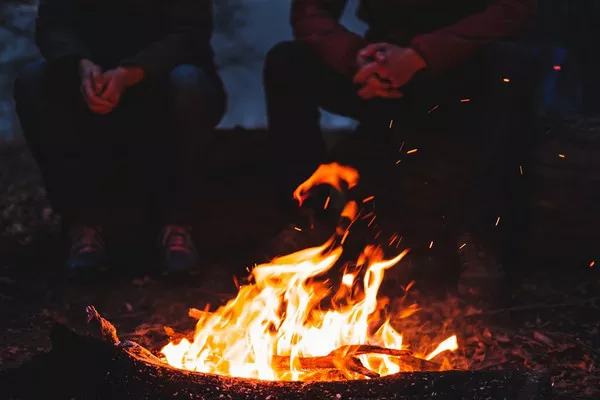Camping is a timeless adventure that brings us closer to nature, offering an escape from the hustle and bustle of everyday life. One essential skill every camper should possess is the ability to start a fire. Whether it’s for warmth, cooking, or simply creating a cozy ambiance, a well-built fire can enhance the camping experience. In this comprehensive guide, we’ll explore the fundamentals of starting a fire while camping, from selecting the right location to mastering various fire-starting techniques.
Choosing the Right Location
Before attempting to start a fire, it’s crucial to select an appropriate location. Look for a designated fire pit if you’re camping in a developed campground. These areas are specifically designed to contain fires safely and minimize the risk of spreading. If you’re in a more remote or primitive camping area, opt for a spot that’s clear of vegetation and at least 15 feet away from tents, trees, and other flammable objects.
Gathering Firewood
Once you’ve chosen your location, it’s time to gather firewood. When collecting firewood, aim for a variety of sizes, from small twigs and branches to larger logs. Start with smaller pieces, known as tinder, which ignite easily and are essential for getting the fire going. Next, gather kindling, slightly larger sticks and branches that will catch fire from the tinder. Finally, collect larger logs or fuelwood to sustain the fire once it’s burning steadily.
Preparing Your Fire Pit
Properly preparing your fire pit can make a significant difference in how effectively your fire burns. Clear away any debris, such as leaves or grass, from the pit to create a clean, flat surface. If the ground is particularly damp, consider laying down a layer of rocks or building a small platform with dry logs to elevate the fire off the ground.
Building the Fire
Now that you’ve gathered your firewood and prepared your fire pit, it’s time to build your fire. Start by creating a small pile of tinder in the center of the pit. This can consist of dry leaves, grass, or shredded bark. Arrange the tinder in a loose, crisscross pattern to allow for airflow.
Next, layer kindling over the tinder in a teepee or log cabin formation. The key is to create a structure that allows oxygen to flow freely while still providing support for the burning materials. As the fire begins to catch, gradually add larger pieces of fuelwood to the structure, being careful not to smother the flames.
Choosing the Right Fire-starting Method
There are several methods for starting a fire when camping, each with its own advantages and challenges. The most common methods include:
1. Matches or Lighter: Perhaps the simplest and most convenient method, using matches or a lighter requires little skill and can quickly ignite tinder when done correctly. Be sure to store matches in a waterproof container and keep your lighter filled with fuel to ensure reliability in any conditions.
2. Fire Starter Cubes or Gel: Fire starter cubes or gel are specially designed to ignite quickly and burn hot, making them ideal for getting a fire going in damp or windy conditions. Simply place a cube or dollop of gel under your tinder and light it with a match or lighter.
3. Ferrocerium Rod: Also known as a fire steel or flint striker, a ferrocerium rod creates sparks when struck against a rough surface, such as the back of a knife blade or a piece of rock. To use, hold the rod close to the tinder bundle and quickly scrape the striker down its length to produce sparks.
4. Fire Piston: A more advanced method, the fire piston uses the principle of rapid compression to ignite tinder. Place a small piece of char cloth or cotton inside the piston chamber, then quickly push the piston down to create a burst of heat that ignites the material.
Fire Safety Tips
- While building and enjoying your campfire, it’s essential to prioritize safety to prevent accidents and minimize environmental impact. Here are some important tips to keep in mind:
- Always keep a bucket of water, a shovel, or a fire extinguisher nearby in case the fire gets out of control.
- Never leave a campfire unattended, and ensure it is completely extinguished before leaving the campsite or going to bed.
- Avoid building fires in windy conditions, as gusts can spread embers and sparks, increasing the risk of wildfires.
- Respect any fire bans or restrictions in place due to high fire danger or environmental concerns.
- Use existing fire rings or pits whenever possible to minimize the impact on the surrounding environment.
Conclusion
Starting a fire when camping is a fundamental skill that every outdoor enthusiast should master. By following the tips outlined in this guide and practicing different fire-starting techniques, you’ll be well-equipped to build safe, efficient fires in any camping situation. Remember to always prioritize safety and respect for the environment, ensuring that your campfire experiences remain enjoyable for years to come.

